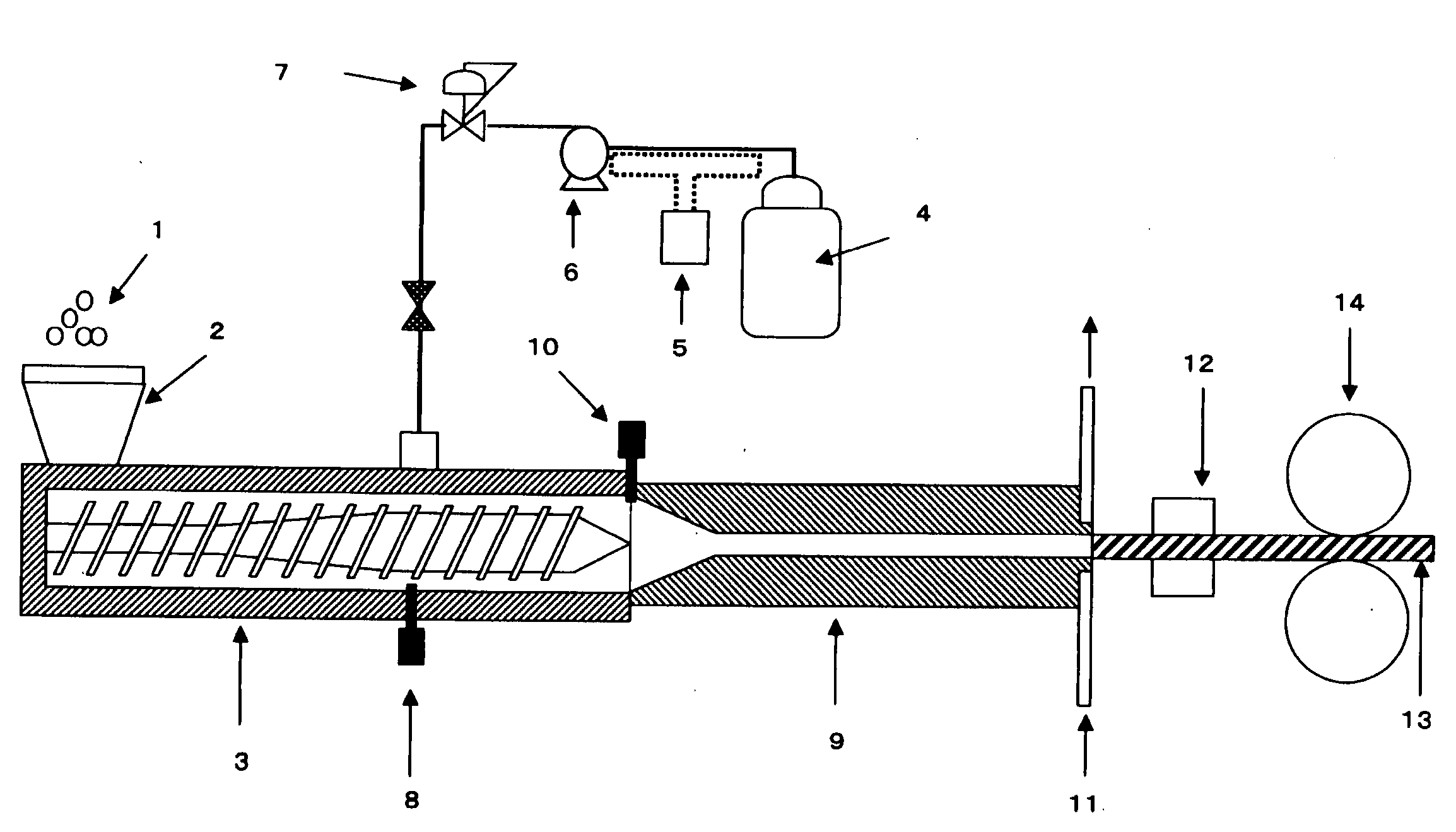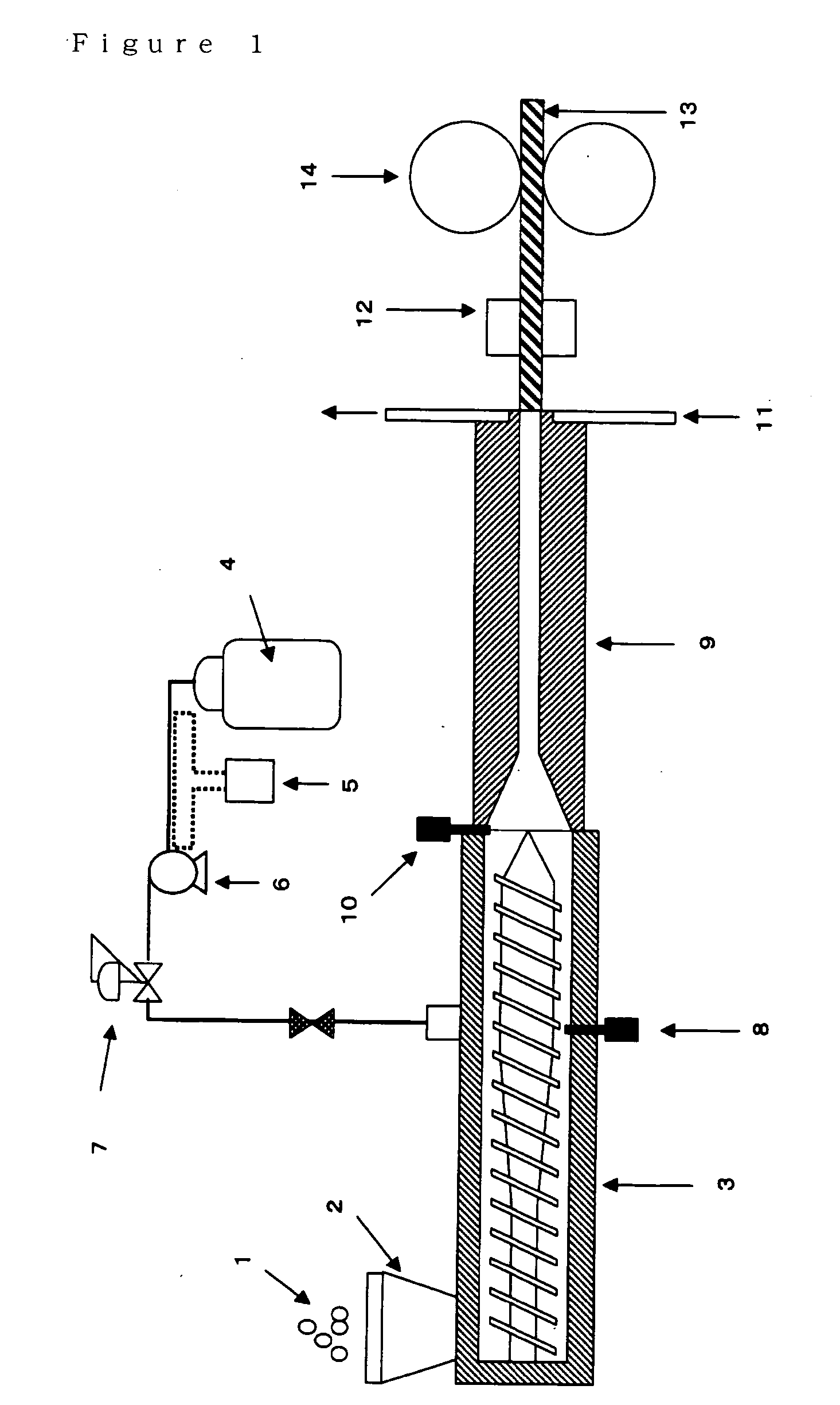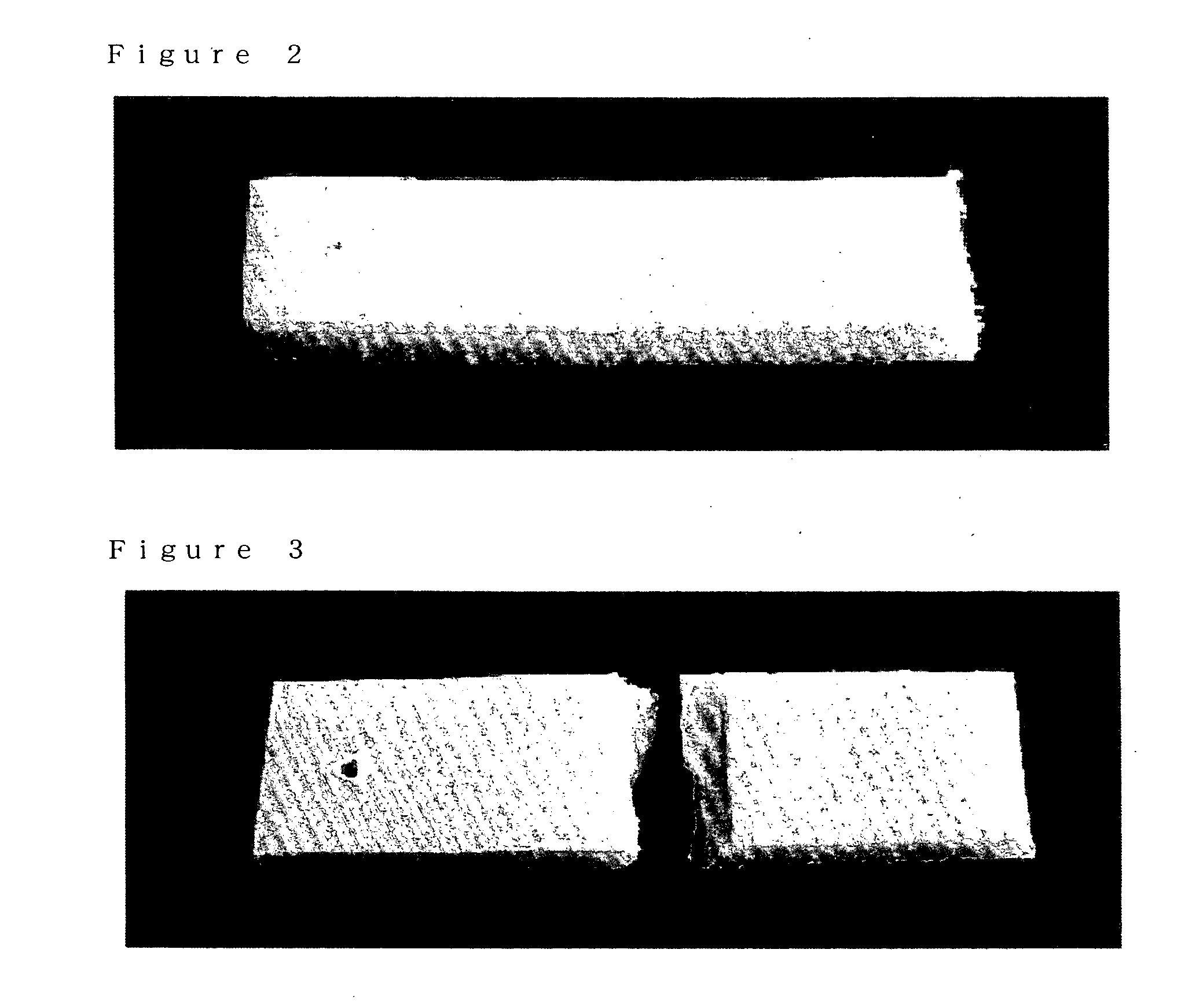Foam of ultra high molecular weight polyethylene and process for the preparation of the same
- Summary
- Abstract
- Description
- Claims
- Application Information
AI Technical Summary
Benefits of technology
Problems solved by technology
Method used
Image
Examples
example 1
[0126] For the extruder, a single screw extruder 3 (L / D=32) with a screw of 50 mm in diameter as shown in FIG. 1 was used. The die used had a rectangle-shaped outlet of 20 mm in width and 5 mm in thickness, and the distance from the front end of screw to the die outlet was 330 mm (the volume from the front end of screw to the die outlet was 78.4 cm3). This die was equipped with tubes at the upper and lower lips, through which water was passed as a cooling medium 11 to enable localized cooling in the vicinity of the lip outlet. An ultra-high-molecular-weight polyethylene composition 1 was obtained by dry blending 100 parts by weight of ultra-high-molecular-weight polyethylene having a viscosity average molecular weight of 1,000,000 (manufactured by MITSUI CHEMICALS; HI-ZEX MILLION 150M), 0.1 part by weight of calcium stearate (manufactured by SAKAI CHEMICAL INDUSTRY) and 0.05 part by weight of sodium bicarbonate / citric acid (manufactured by BOEHRINGER INGELHEIM, CF).
[0127] The ultra...
example 2
[0130] The experiment was carried out in the same manner as in Example 1, except that carbon dioxide was supplied to the extruder 3 at a ratio of 2.5 parts by weight to 100 parts by weight of the ultra-high-molecular-weight polyethylene composition, and the surface temperature immediately after discharge from the die and the temperature at the central part immediately after discharge from the die were set to 125° C. and 130° C., respectively. The evaluation results for the expanded product are presented in Table 1.
example 3
[0131] The experiment was carried out in the same manner as in Example 1, except that carbon dioxide was supplied to the extruder 3 at a ratio of 3.6 parts by weight to 100 parts by weight of the ultra-high-molecular-weight polyethylene composition, and the surface temperature immediately after discharge from the die and the temperature at the central part immediately after discharge from the die were set to 123° C. and 125° C., respectively. The evaluation results for the expanded product are presented in Table 1.
PUM
| Property | Measurement | Unit |
|---|---|---|
| Temperature | aaaaa | aaaaa |
| Temperature | aaaaa | aaaaa |
| Temperature | aaaaa | aaaaa |
Abstract
Description
Claims
Application Information
 Login to View More
Login to View More - R&D
- Intellectual Property
- Life Sciences
- Materials
- Tech Scout
- Unparalleled Data Quality
- Higher Quality Content
- 60% Fewer Hallucinations
Browse by: Latest US Patents, China's latest patents, Technical Efficacy Thesaurus, Application Domain, Technology Topic, Popular Technical Reports.
© 2025 PatSnap. All rights reserved.Legal|Privacy policy|Modern Slavery Act Transparency Statement|Sitemap|About US| Contact US: help@patsnap.com



